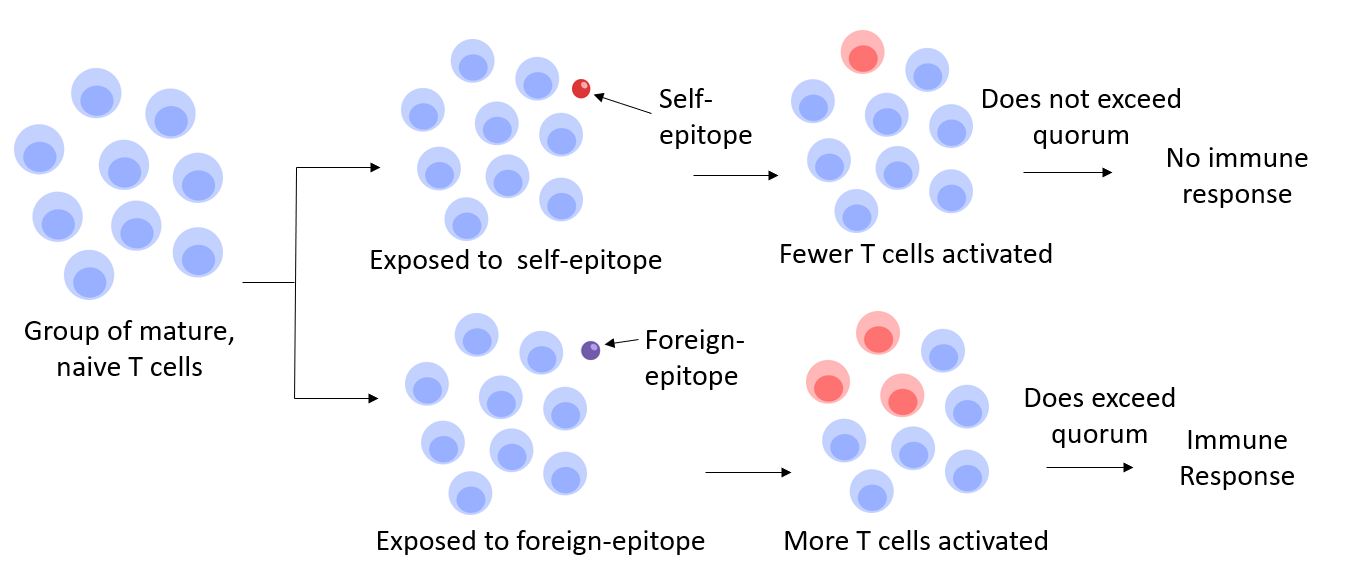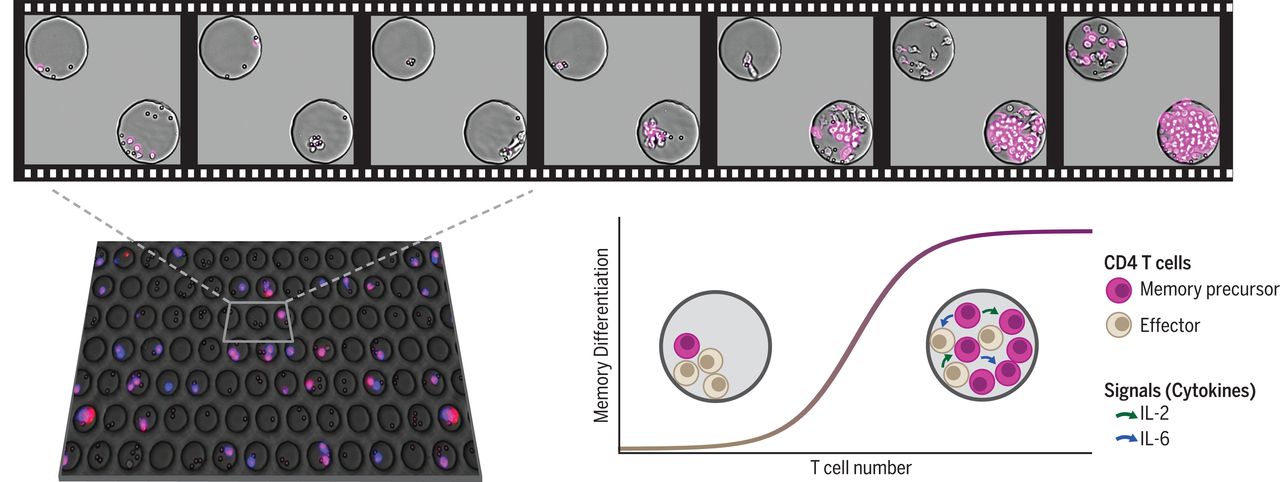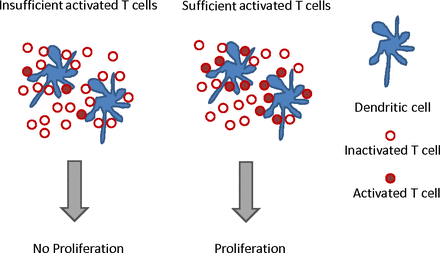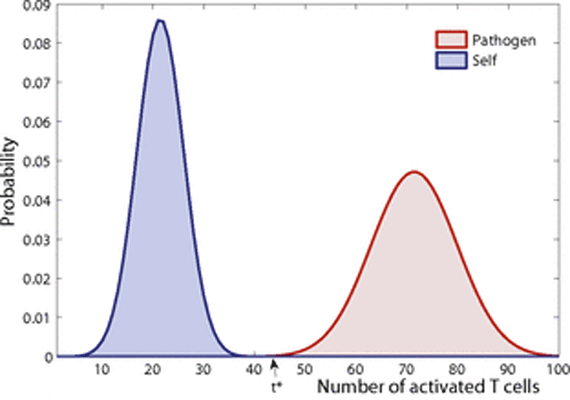Quorum sensing ( Peripheral tolerance)
![]() Having survived negative selection against M self-peptides, the chance of activation against a random peptide is small,
Having survived negative selection against M self-peptides, the chance of activation against a random peptide is small,

![]() A large repertoire to T cells is thus needed to detect a pathogen peptide
A large repertoire to T cells is thus needed to detect a pathogen peptide
Estimates of number of distinct T cells vary, we used an estimate T~40,000 for a particular tissue
![]() Since thymic selection is stochastic, a given TCR cannot be exposed to the entire self-peptide repertoire,
Since thymic selection is stochastic, a given TCR cannot be exposed to the entire self-peptide repertoire,
Assume that a fraction M/P of all possible self-peptides P are encountered in the thymus;
The resulting in a self-activation probability is reduced to

Given the large number of T cells in a tissue, the chance of self-reactivity is large!
![]() Peripheral tolerance- Regulatory T cells (Tregs):
Peripheral tolerance- Regulatory T cells (Tregs):
For an activated T cell to proliferate and differentiate to mount an immune response, sensing of the cytokine Interlukin 2 (IL2) is necessary.
Activated T cells produce IL2; Tregs consume IL2 but do not produce it. inhibit autoimmune response even if
Overconsumption of IL2 by Tregs inhibit autoimmune response even if an autoreactive T cell is activated.
![]() How do T cells mount an effective response to foreign epitopes while suppressing self-reactive T cells?
How do T cells mount an effective response to foreign epitopes while suppressing self-reactive T cells?
proposed that immune response requires collective decision (quorum) of Q T cells:

Quorum sensing amplifies distinction between self and foreign peptides: for Q=10
_!.jpeg)
![]() Subsequent validation: M. Polonsky et al, Science 360, eaaj1853 (2018) (offline)
Subsequent validation: M. Polonsky et al, Science 360, eaaj1853 (2018) (offline)

Clustered T cell expand around antigen presenting cells in IL2 dpendent manner beyond a threshold T cell density.
Above this density there is flux of IL2 towards other T cells.
Overconsumption of IL2 by Tregs inhibit autoimmune response even if an autoreactive T cell is activated.
![]() Informatic analysis indicates that TCRs can be distinguishes as a repertoire (set), but not individually:
Informatic analysis indicates that TCRs can be distinguishes as a repertoire (set), but not individually:
Also: F. Camaglia, ..., T. Mora, A. Walczak, N. Friedman, eLife 2023;12:e81622 (2023) (offline)


![]()